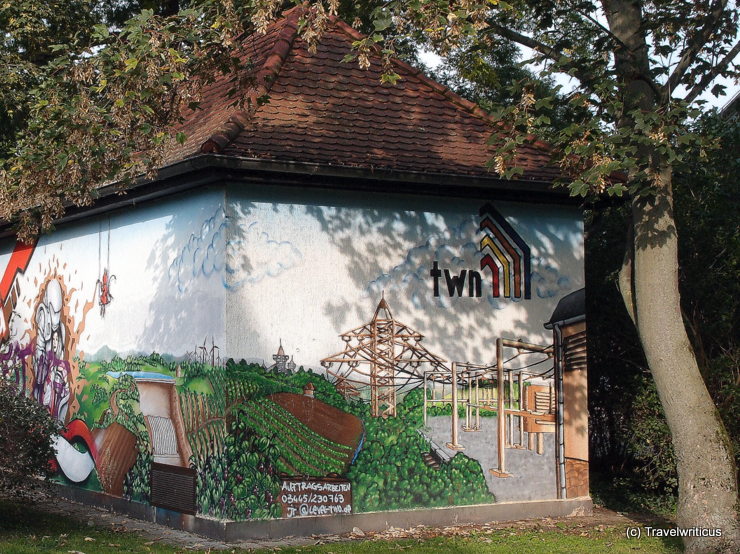
Interesting mural seen on an electrical substation of the TWN in Naumburg (Saale). It shows among others a large substation, some vineyards and the famous cathedral of Naumburg.
You only see what you know (Goethe)

Interesting mural seen on an electrical substation of the TWN in Naumburg (Saale). It shows among others a large substation, some vineyards and the famous cathedral of Naumburg.
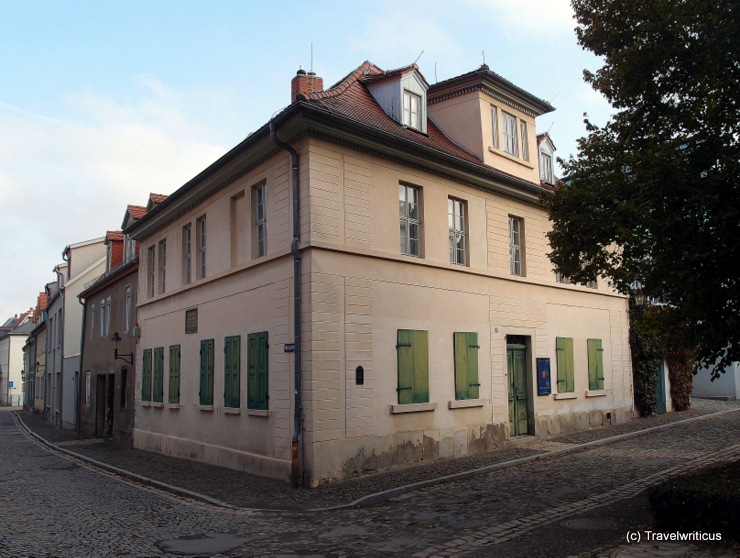
The Nietzsche House has been open to the public since 1994. A permanent exhibition is devoted to the life and work of the philosopher Friedrich Nietzsche. The Nietzsche Documentation Centre, also housed here, is concerned with researching the reception of Nietzsche’s works. [German]
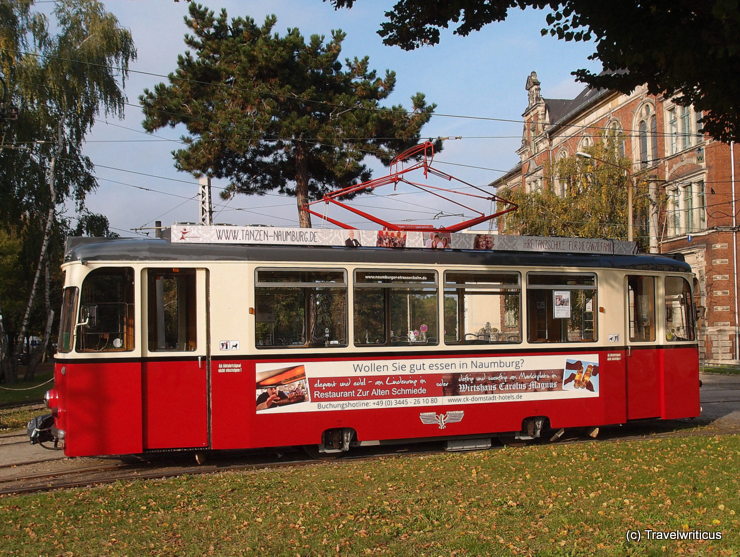
This tramcar, still operated by the Naumburg Tramway, was built in 1973. Even though this tramcar numbered N° 51 is of the same class as tramcar N° 50, it looks more lively. Fascinating how much difference some red paint can make.
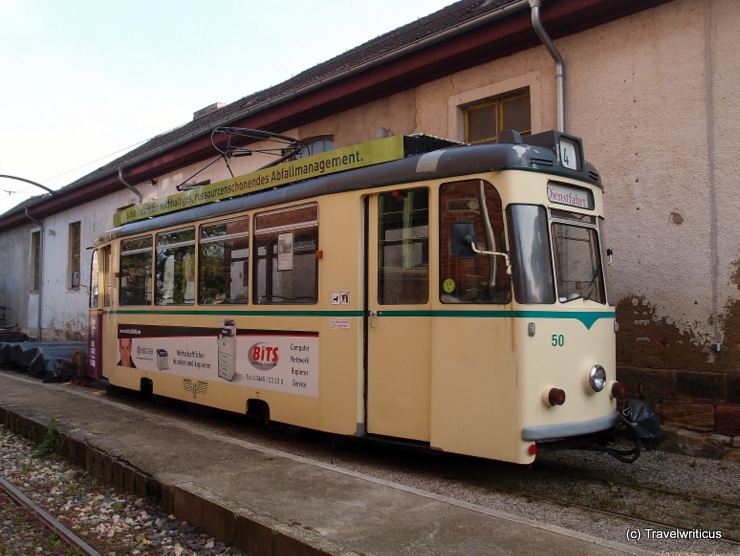
This tramcar of class 70/1 was built in 1971 and is still in use by the Naumburg Tramway (Naumburger Straßenbahn) in Naumburg (Saale). The Naumburg Tramway is considered the shortest urban tramway in Germany and one of the smallest tramways in Europe.
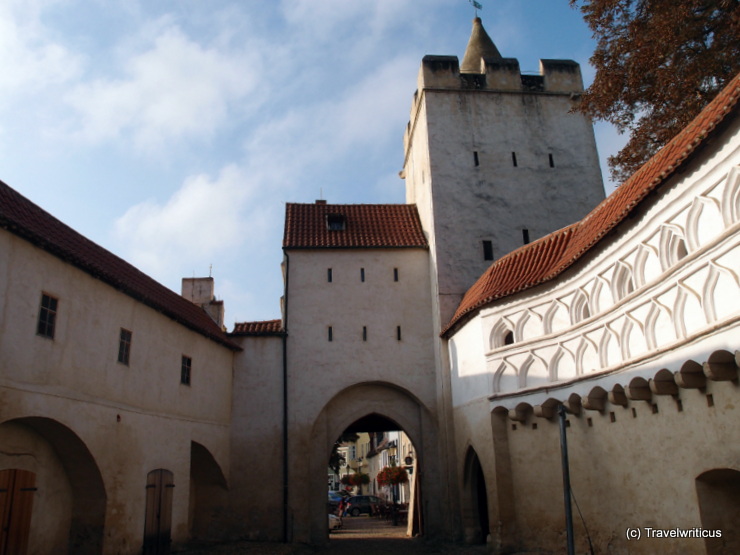
Of five town gates, only one is left. The Marientor is a gate dating back to 1445. It consists of a tower with the region’s typical conical roof and a barbican covered by a late Gothic wall walk.
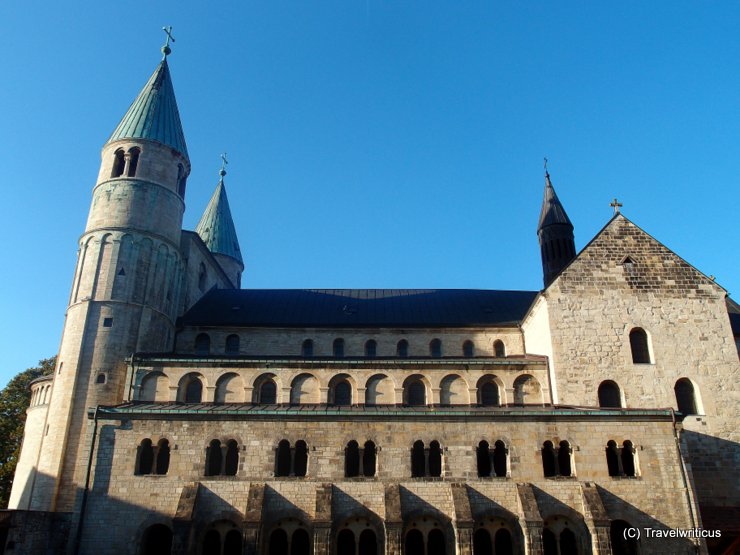
St. Cyriakus was built in the 10th century and is an example of Ottonian architecture. Inside, one can find a late 11th-century copy of the grave of Christ. I was especially surprised by the fact that the layout of this church lacks right angles. The church is part of the Transromanica.
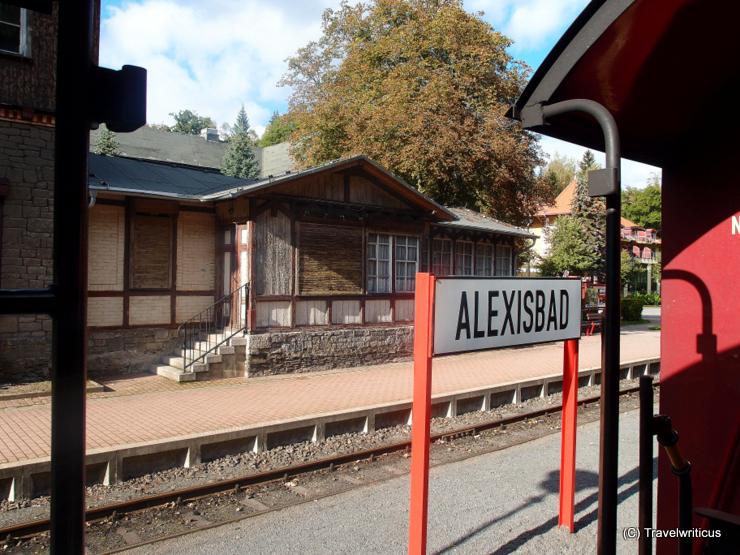
The Selke Valley Railway (Selketalbahn) connects the places Quedlingburg and Hasselfelde/Eisfelder Talmühle with a branch to Harzgerode. It is part of the Harz Narrow Gauge Railways (Harzer Schmalspurbahnen), the largest narrow gauge network in Germany. At my first visit I took a ride from Alexisbad to Gernrode.
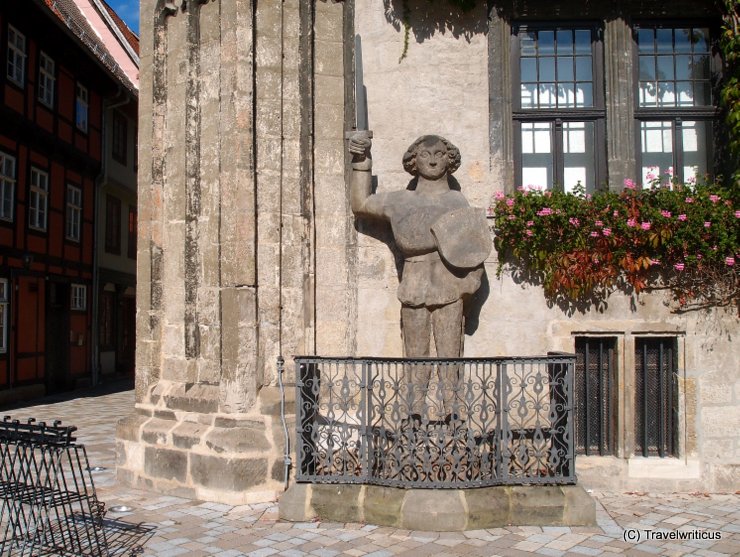
In many German cities you can see such statues simple called Roland. in former times these statues indicated that this place was privileged with city rights. Generally they were placed next to the city hall or at the market place so everybody could see this sign of privileges.
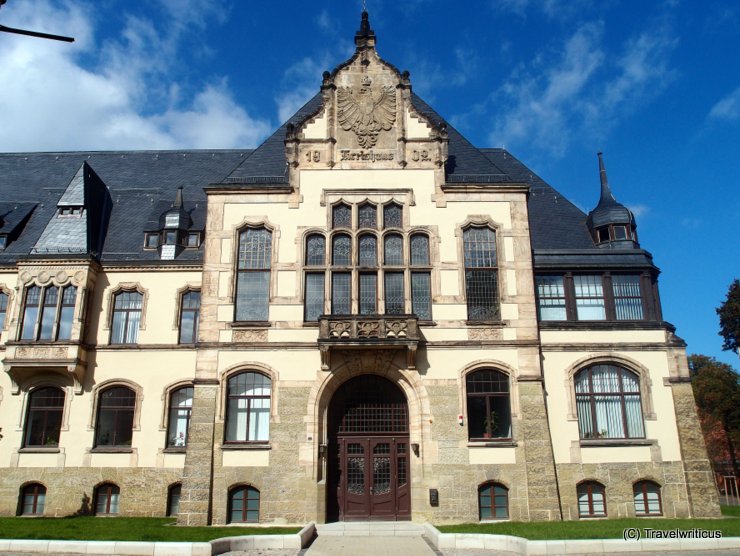
Once upon a time administration buildings in Germany were built like castles. This district administration for the district Quedlinburg was built in 1902 in the style of Historicism. I wonder which kind of offices had been behind all of those different types of windows?
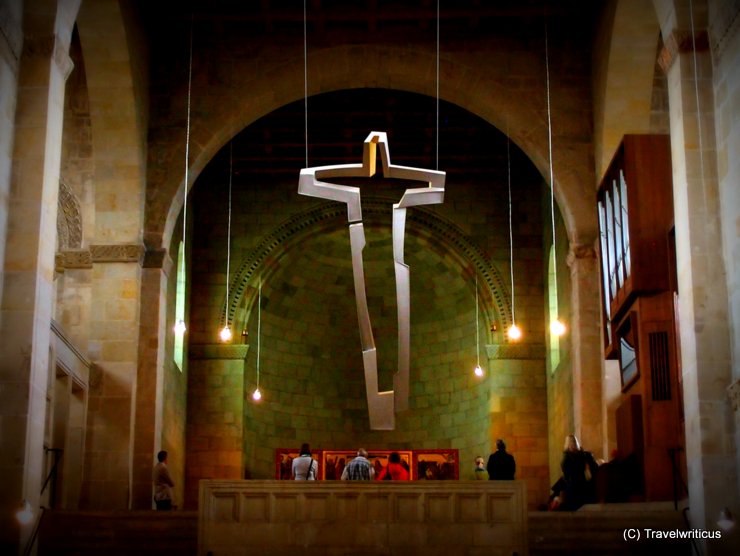
In 2006, there was a need for a new crucifix inside the St. Servatius Collegiate Church of Quedlinburg Abbey. An artist from Halle, Mr. Thomas Leu, was chosen to create this crucifix made of aluminium.
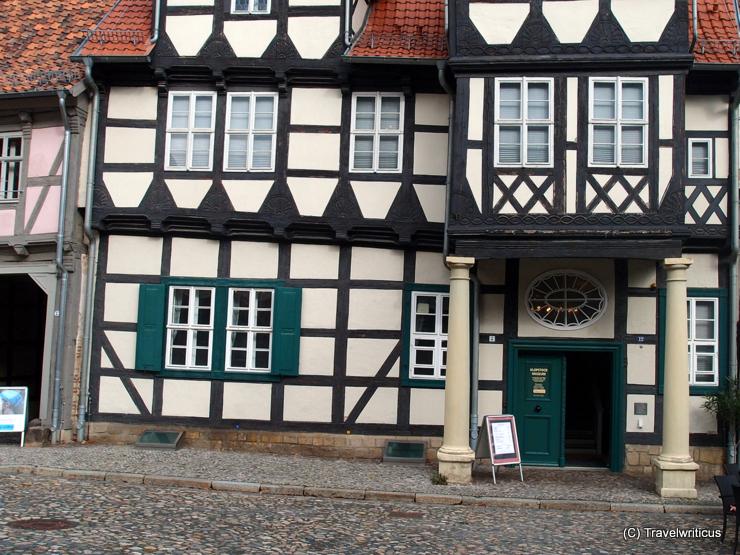
German writer Friedrich Gottlieb Klopstock was born in this building on July 2nd, 1724. Today, it houses a museum about his works. For example, visitors learn more about the epic poem ‘The Messiah’ (Der Messias).
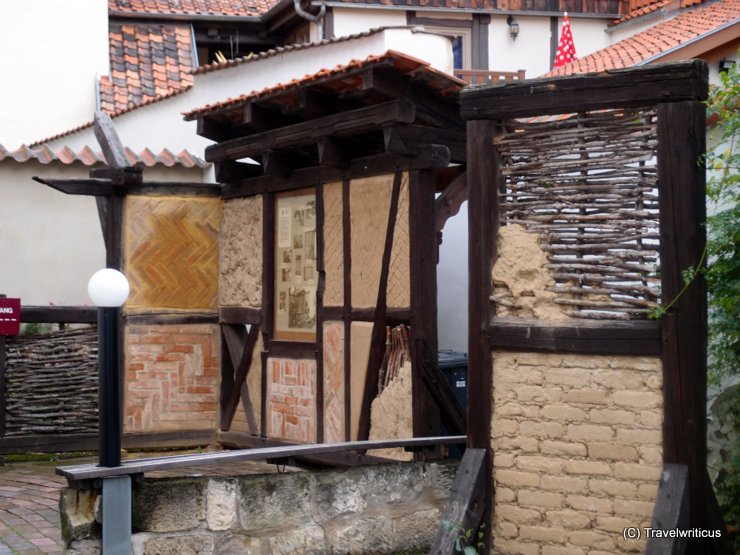
The museum about timber framing (Fachwerkmuseum) is located in one of the oldest houses of Quedlinburg, a 14th-century building named Ständerbau. Inside, several models show the different styles of half-timbered buildings over time.